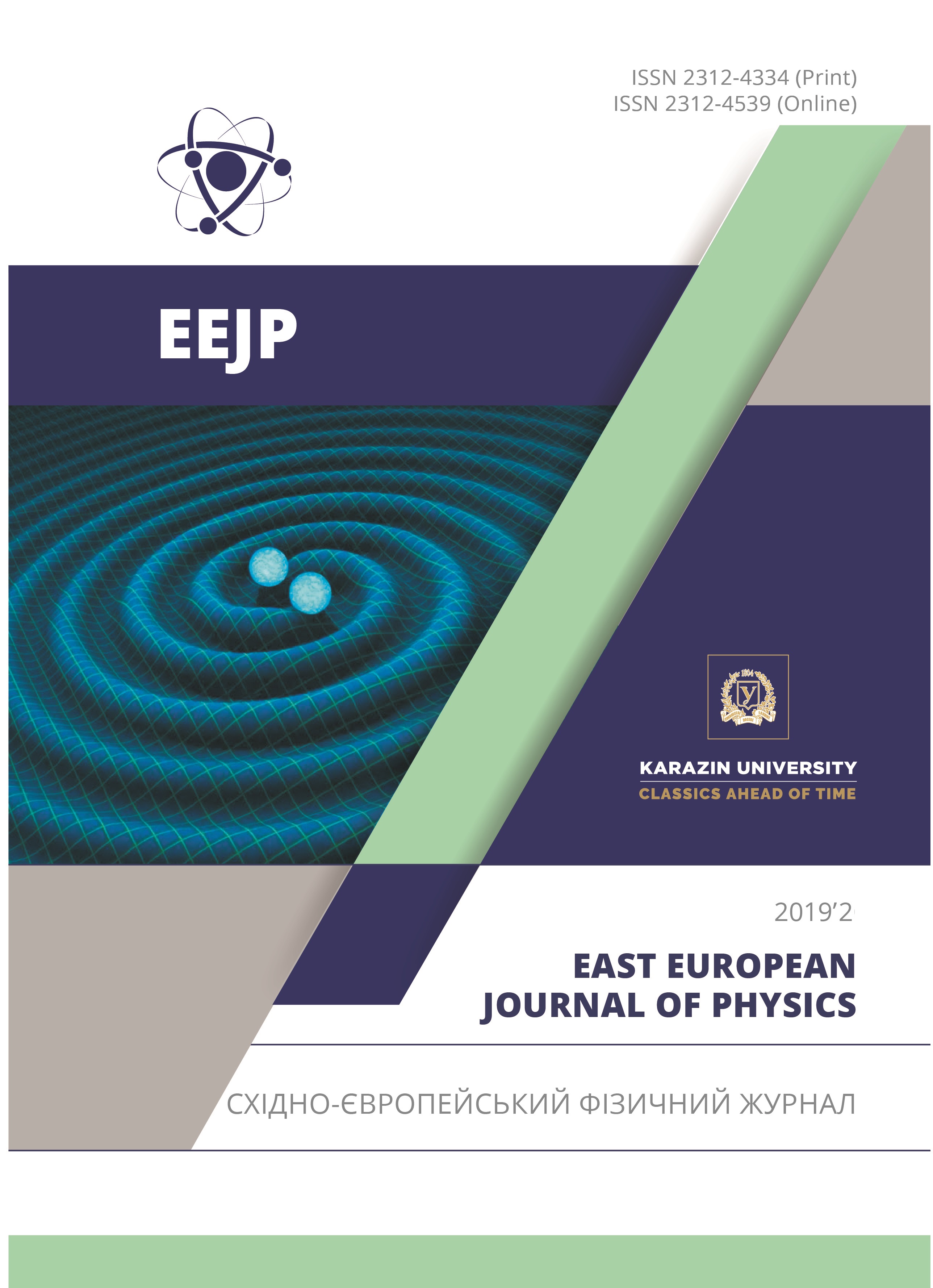Effect of Silicon Surface Treatment on the Electrical and Photoelectric Properties of Nanostructured MoOx/n-Si Heterojunctions
Abstract
The paper presents the results of studies of the effect of silicon surface treatment on the electrical and photoelectric properties of nanostructured MoOx/n-Si heterojunctions. The nanostructured heterojunctions MoOx/n-Si, were prepared by deposition of thin films of molybdenum oxide (n-type conductivity) by reactive magnetron sputtering in the universal vacuum system Leybold Heraeus L560 on the nanostructured silicon substrates (n-type conductivity), which were made by chemical etching with the assistance of silver nanoparticles. Dark and light volt-ampere (I – V) characteristics of the heterojunctions under study were measured, the value of the potential barrier height, the values of the serial Rs and the shunt Rsh resistance at room temperature were determined. It was established that the silicon surface treatment does not affect the potential barrier height, but significantly affects the values of serial Rs and shunt Rsh resistance. The electrical and photoelectric properties of the obtained structures were investigated, the dominant mechanisms of current transfer through the heterostructures under forward bias are well described in the framework of emission-recombination and tunneling models with the presence of interface states. The main mechanism for the charge carrier transport through heterojunctions with the reverse bias is the Frenkel–Pool emission. Investigation of photoelectric properties of heterojunctions MoOx/n-Si was carried out at illumination by white light with intensity Popt = 80 mW/сm2. It was established that the heterostructure No.5 MoOx/n-Si with grown nanowires and etched silver nanoparticles has a maximum open-circuit voltage Voc = 0.17 V, short-circuit current density Isc = 10 mA/cm2. The possibilities of using the obtained heterostructures as photodiodes were analyzed.
Downloads
References
S. Subbarayudu, V. Madhavi and S. Uthanna, Adv. Mat. Lett. 4(8), 637 (2013), https://doi.org/10.5185/amlett.2012.11466.
L.D. López‐Carreño, A. Pardo, M. Zuluaga, O.L. Cortés‐Bracho, J. Torres, and J.E. Alfonso, Phys. Stat. Sol. (c). 4, 4064 (2007), https://doi.org/10.1002/pssc.200775931.
A.L. Fahrenbruch and R.H. Bube, Fundamentals of Solar Cells. Photovoltaic Solar Energy Conversion (Academic, New York, 1983).
V.V. Brus, M.I. Ilashchuk, Z.D. Kovalyuk, P.D. Maryanchuk and K.S. Ulyanytskiy, Semicond. Sci. Technol. 26, 125006 (2011), http://dx.doi.org/10.1088/0268-1242/26/12/125006.
M.M. Solovan, Journal of Nano- and Electronic Physics. 10(2), 02030 (2018), https://doi.org/10.21272/jnep.10(2).02030.
M.M. Solovan, V.V. Brus, A.I. Mostovyi, P.D. Maryanchuk, I.G. Orletskyi, T.T. Kovaliuk and S.L. Abashin, Semiconductors. 51(4), 542 (2017), https://doi.org/10.1134/S1063782617040200.
L.A. Kosyachenko, X. Methew, V.V. Motushchuk and V.M. Sklyarchuk, Solar Energy. 80, 148 (2006), https://doi.org/10.1016/j.solener.2005.01.009.
H.P. Parkhomenko, M.M. Solovan and P.D. Maryanchuk, Journal of Nano- and Electronic Physics. 10(2), 02028 (2018), https://doi.org/10.21272/jnep.10(2).02028.
B.L. Sharma and R.K. Purohit, Semiconductor heterojunctions, Vol. 5. (Pergamon Press, New York, 2015), p. 224.
A. Fahrenbruch and R. Byub, Solar cells (theory and experiment), (Energoatomizdat, Moscow, 1987), p. 278.
S.M. Sze and K. Kwok, Physics of Semiconductor Devices, 3rd ed. (Wiley, New Jersey, 2007), p. 815.
V.V. Brus, M.I. Ilashchuk, V.V. Khomyak, Z.D. Kovalyuk, P.D. Maryanchuk and K.S. Ulyanytsky, Semiconductors, 9, 1152 (2012), https://doi.org/10.1134/S1063782612090059.
Authors who publish with this journal agree to the following terms:
- Authors retain copyright and grant the journal right of first publication with the work simultaneously licensed under a Creative Commons Attribution License that allows others to share the work with an acknowledgment of the work's authorship and initial publication in this journal.
- Authors are able to enter into separate, additional contractual arrangements for the non-exclusive distribution of the journal's published version of the work (e.g., post it to an institutional repository or publish it in a book), with an acknowledgment of its initial publication in this journal.
- Authors are permitted and encouraged to post their work online (e.g., in institutional repositories or on their website) prior to and during the submission process, as it can lead to productive exchanges, as well as earlier and greater citation of published work (See The Effect of Open Access).








